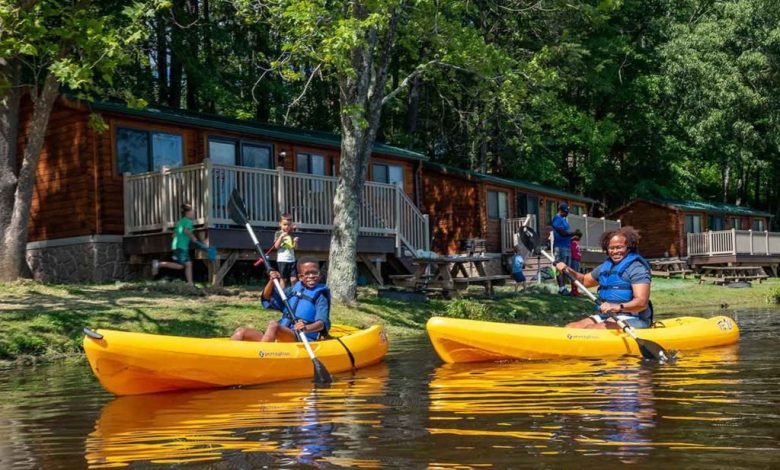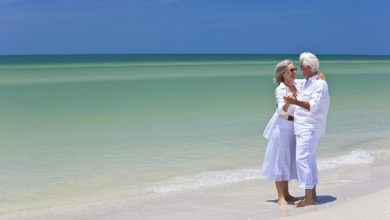Kayak Camping Hygiene: Tips for Staying Clean in the Wild

Kayak camping offers a unique blend of adventure and tranquility, allowing outdoor enthusiasts to immerse themselves in the beauty of nature. However, maintaining hygiene in the wilderness is crucial for both personal well-being and environmental sustainability. In this comprehensive guide, we will explore essential tips and practices to ensure optimal cleanliness during your kayak camping adventures.
Why Hygiene Matters in Kayak Camping
Impact on Health and Well-being
Proper hygiene in the wilderness goes beyond just personal comfort; it directly affects your health. In the wild, exposure to unclean conditions can lead to various health issues. Bacteria and pathogens present in untreated water sources can cause waterborne diseases, emphasizing the need for effective water purification methods. Additionally, neglecting personal hygiene can result in skin infections and discomfort, undermining the joy of the outdoor experience.
Environmental Considerations
Maintaining hygiene in kayak camping isn’t just about your well-being; it’s also about preserving the environment. Biodegradable soaps and shampoos are essential to minimize the impact on water sources. Adopting Leave No Trace principles ensures that your presence in the wilderness leaves minimal to no lasting effects. Responsible waste disposal practices contribute to the sustainability of these pristine locations, allowing future generations to enjoy them as well.
Respect for Nature and Fellow Campers
Respecting the natural environment and fellow campers is a fundamental aspect of outdoor ethics. By practicing good hygiene, you contribute to a positive and enjoyable experience for everyone. Consideration for others extends to noise levels, campsite selection, and waste management. Adhering to these principles not only fosters a sense of community among outdoor enthusiasts but also helps maintain the integrity of these breathtaking landscapes.
Essential Personal Hygiene Items to Pack
Biodegradable Soap and Shampoo
When preparing for kayak camping, opt for biodegradable soaps and shampoos to minimize the environmental impact. Traditional cleaning products often contain harmful chemicals that can pollute water sources and disrupt ecosystems. Many eco-friendly options are available, ensuring a clean and guilt-free camping experience.
Toothbrush and Toothpaste
Maintaining oral hygiene is often overlooked in outdoor settings. However, it is crucial to pack a toothbrush and toothpaste to prevent dental issues. Consider using compact, travel-sized options to save space in your kayak.
Hand Sanitizer and Wet Wipes
In situations where water is scarce, hand sanitizer and wet wipes become invaluable. These items help maintain cleanliness after meals or when traditional washing facilities are unavailable. Choose biodegradable wet wipes to align with environmentally conscious practices.
Quick-dry Towels
Quick-dry towels are essential for staying dry and comfortable during kayak camping. They absorb moisture efficiently and dry rapidly, preventing unpleasant odors and the growth of bacteria. Invest in quality microfiber towels for their lightweight and compact nature.
Sunscreen and Insect Repellent
Protecting yourself from the elements is vital for overall well-being. Sunscreen guards against harmful UV rays, while insect repellent helps ward off mosquitoes and other biting insects. Incorporate these items into your daily routine to enjoy your kayak camping experience without the discomfort of sunburns or bug bites.
Waste Disposal in the Wilderness
Proper Disposal of Human Waste
When nature calls in the great outdoors, it’s essential to follow Leave No Trace principles for human waste disposal. Use designated facilities if available; if not, employ a portable toilet system. Follow the “cat hole” method by digging a small hole at least 6 to 8 inches deep for solid waste disposal. Carry biodegradable toilet paper and pack out used hygiene products in sealed, odor-proof bags.
Packing Out Trash and Waste
Responsible waste management is crucial for minimizing your impact on the environment. Always pack out what you pack in, including food wrappers, empty containers, and any other non-biodegradable items. Consider carrying a dedicated trash bag to collect waste throughout your journey, disposing of it properly upon your return.
Leave No Trace Principles
Adhering to Leave No Trace principles is essential for preserving the wilderness. These principles encompass minimizing campfire impact, respecting wildlife, and leaving natural and cultural features undisturbed. Integrating these principles into your kayak camping routine ensures a harmonious coexistence between outdoor enthusiasts and the natural world.
Choosing the Right Campsite for Hygiene
Proximity to Water Sources
Selecting a campsite near a water source is convenient for maintaining hygiene. However, follow established guidelines to ensure minimal impact. Set up at least 200 feet away from lakes and streams to protect fragile ecosystems. Use biodegradable soap away from water sources to prevent contamination.
Proper Distance from Trails and Other Campsites
Maintaining an appropriate distance from trails and neighboring campsites is essential for both privacy and environmental protection. Follow established camping regulations to avoid overcrowding and reduce the risk of disturbing wildlife. Respecting these boundaries ensures a positive experience for everyone.
Terrain Considerations for Personal Hygiene Routines
Choose a campsite with a flat and well-drained terrain to facilitate personal hygiene routines. Avoid areas prone to flooding or mudslides, as they can compromise your cleanliness efforts. Additionally, a level surface provides stability when setting up portable camp showers and other hygiene-related equipment.
Setting Up a Portable Camp Shower
A. Options for Portable Showers
Maintaining personal hygiene during kayak camping is made more accessible with portable camp showers. There are various options available, including solar-powered shower bags, pressurized water systems, and compact shower tents. Choose a solution that aligns with your preferences and camping style.
Water Purification and Conservation
Purifying Water for Drinking and Cleaning
Access to clean water is vital for both hydration and hygiene. Utilize water purification methods such as portable water filters, purifying tablets, or UV light devices to ensure the water you use for drinking and cleaning is free from harmful contaminants. Regularly clean and maintain your water purification tools to guarantee their effectiveness.
Tips for Conserving Water in a Kayak Camping Environment
Conserving water is essential, especially in remote kayak camping settings where resupply may be challenging. Adopt mindful water usage practices, such as turning off the tap while brushing your teeth or using a basin for washing dishes. By minimizing water wastage, you not only ensure a sustainable water supply for your journey but also reduce your environmental impact.
Use of Water Filtration Systems
Investing in reliable water filtration systems can significantly enhance your kayak camping experience. Look for lightweight and portable systems that effectively remove impurities. Some advanced filters can even handle larger volumes of water, providing a more efficient solution for extended trips. Prioritize a system that suits your specific needs and preferences.
Clothing and Gear Hygiene
Keeping Clothes and Gear Clean
Maintaining cleanliness extends beyond personal hygiene to include your clothing and gear. Dirty clothes can lead to discomfort and skin irritations, while dirty gear can compromise its functionality. Regularly clean and air out your clothing and gear, especially after exposure to water or sweat. Consider quick-dry fabrics that resist odors and facilitate faster drying.
Proper Storage and Airing Out of Equipment
After each use, ensure that your kayak camping gear is properly stored and aired out to prevent mold and mildew. Hang wet items, like towels and clothing, in a well-ventilated area or use designated drying racks. Proper storage not only prolongs the lifespan of your equipment but also contributes to a more pleasant camping experience.
Dealing with Wet Gear in a Kayak Camping Scenario
Wet gear is an inevitable part of kayak camping, but proper management can mitigate its impact. Invest in waterproof storage solutions for essential items like sleeping bags and electronics. Dry bags and compression sacks help keep clothing and other gear dry during water-based activities. Additionally, consider using moisture-wicking layers to minimize discomfort caused by wet clothing.
Personal Hygiene Practices While Kayak Camping
Daily Routines for Cleanliness
Establishing a daily hygiene routine is crucial for staying clean and comfortable during kayak camping. Schedule time for personal care activities, such as washing your face, brushing your teeth, and changing into fresh clothes. Consistency in these routines not only promotes well-being but also boosts morale during your outdoor adventure.
Importance of Brushing Teeth and Maintaining Oral Hygiene
Oral hygiene often takes a backseat in outdoor settings, but neglecting it can lead to dental issues. Pack a compact toothbrush and toothpaste, and make it a priority to brush your teeth regularly. Maintaining oral hygiene not only contributes to overall health but also ensures a more enjoyable camping experience without dental discomfort.
Quick Hygiene Hacks for Limited Resources
In situations where resources are limited, embrace quick hygiene hacks. Dry shampoo can refresh your hair without the need for water, and body wipes offer a convenient alternative to traditional showers. These hacks are especially handy during extended kayak camping trips where access to water may be restricted.
Wildlife Safety and Hygiene
Understanding the Impact of Hygiene on Wildlife
Maintaining proper hygiene isn’t only about personal comfort; it also plays a role in wildlife conservation. Human scents, food odors, and improperly disposed waste can attract animals, disrupting their natural behavior. Follow guidelines for responsible camping to minimize your impact on local wildlife and contribute to the overall preservation of the ecosystem.
Proper Food Storage to Avoid Attracting Animals
Proper food storage is a key element of wildlife safety. Use bear-resistant containers or hang food in designated bear bags to prevent animals from accessing your provisions. By securing your food, you reduce the risk of attracting wildlife to your campsite, promoting a safer and more harmonious outdoor experience for both you and the local fauna.
Responsible Disposal of Food Scraps and Leftovers
Dispose of food scraps and leftovers responsibly to minimize the risk of wildlife encounters. Pack out all food waste in sealed containers, leaving no trace of your meals behind. Avoid burying or burning food waste, as these methods may attract animals to the smell. Responsible disposal practices contribute to the well-being of the local ecosystem and promote a healthier coexistence with wildlife.
Emergency Hygiene Preparedness
First Aid Kit Essentials for Hygiene Emergencies
In any outdoor adventure, emergencies can happen, and being prepared is paramount. Include hygiene-related items in your first aid kit, such as antiseptic wipes, bandages, and any necessary medications. Addressing hygiene emergencies promptly can prevent the escalation of health issues and ensure a safer camping experience.
Dealing with Unexpected Situations
Despite meticulous planning, unexpected situations may arise during kayak camping. Be prepared to adapt your hygiene practices to unforeseen challenges. For instance, if your portable shower malfunctions, have alternative methods for staying clean, such as using a basin for a sponge bath. Flexibility and resourcefulness are key to overcoming unexpected hygiene obstacles.
Importance of Communication in Emergencies
Effective communication is crucial during emergencies. Ensure that your camping group is familiar with emergency protocols, including communication channels and signals. In case of hygiene-related emergencies, clear communication can facilitate quick and coordinated responses, ensuring the safety and well-being of all members.
Conclusion
In conclusion, practicing proper hygiene during kayak camping is not only essential for personal well-being but also for environmental conservation. By incorporating these tips into your outdoor routine, you contribute to the preservation of pristine wilderness areas and foster a positive camping experience for yourself and fellow outdoor enthusiasts. Remember, responsible hygiene practices ensure that the beauty of nature remains intact for future generations of kayak campers.









